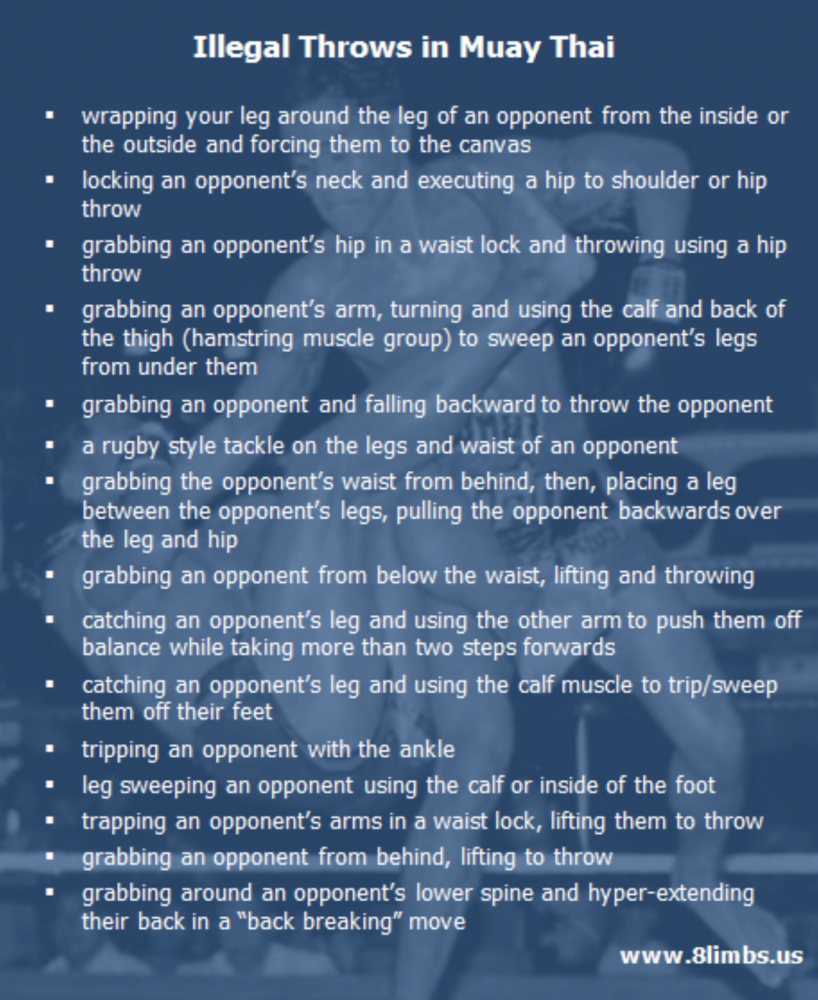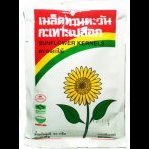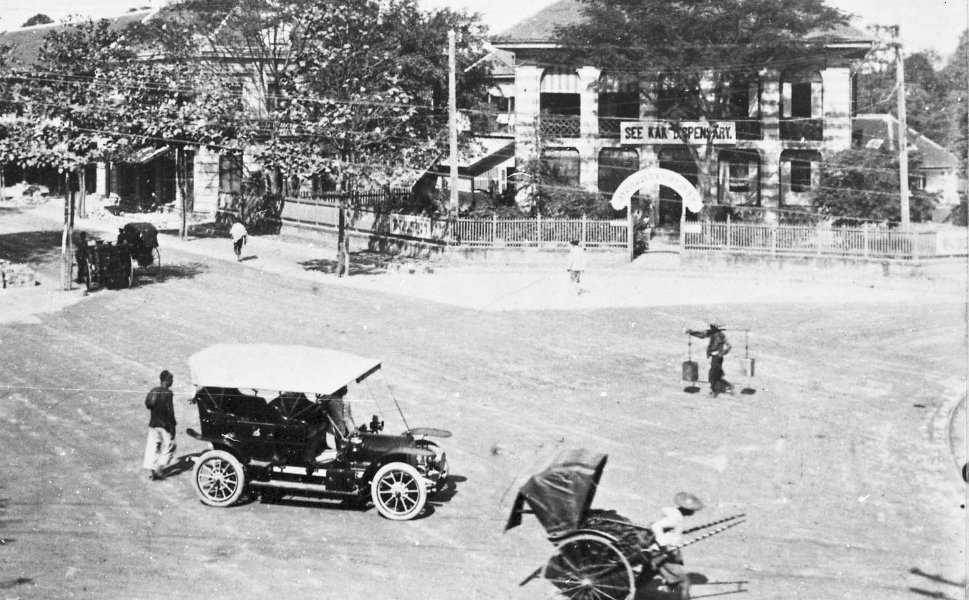Leaderboard
Popular Content
Showing content with the highest reputation on 06/24/2019 in all areas
-
[admin edit: some of the photos in this thread were lost due to a probable attack on our website, unfortunately. We recovered most of the thread. Thank you to everyone who supported us through this.] Hello all. My name is Tim. I live in California and in a few days I’ll be leaving for Bangkok, Thailand to train Muay Thai Lertrit under the guidance of General Tunwakom. I contacted Sylvie some months ago about her participating in interviews for my masters thesis. I ended up spending hours talking with her husband Kevin. The next thing I know, I’m buying a ticket to Thailand. When Kevin proposed I come to Thailand to train with General Tunwakom, I was somewhat skeptical about the proposition coming to fruition, let alone the project turning into a full feature on their websites and media channels. But they made it happen for me. I am so very thankful for the faith both Kevin and Sylvie have in me and the opportunity they have presented me with. Thank you, thank you, thank you to both of them! I started training martial arts at age 17 and it’s been an all consuming venture since. I’ve trained in various disciplines of boxing as well as Brazilian Jiujitsu, and Kung Fu. Currently I’m a Jiujitsu blue belt in the Carlson Gracie organization and I hold a 7º black belt in Kung Fu San Soo. I’m not a fighter by any means however. Fighting as never been an interest of mine. I just like moving. Despite my recent academic achievements, I had an incredibly difficult time in school - I didn’t learn to read until the 6th grade and spent most mornings of my youth throwing heavy objects at my mother in an attempt to avoiding going to school. I sought refuge in sport. I've never been a natural athlete though, I had to write L and R on my shoes for during my first year of high school American football to know which direction to move (left or right), but moving my body was mediative and made me feel like I was a person. It’s what I love about martial arts - the meditative repetition of learning something, not until you get it right, but until you can’t do it wrong. I’ve learned more about my self and the world in the hours spent learning a punch or kick than doing anything else. It was my faith in martial arts which took me back to school. After achieving my black belt I thought: if I could apply half of the effort I put into getting my black belt into school, then it would be no problem. It was true. I always found away to make school about the things that interested me - food, skateboarding and of course martial arts. My master thesis seeks to blend theoretical sociology with martial arts. Which brought me to Kevin and Sylvie. They have presented me with this opportunity I feel is much bigger than me just traveling and training. I don’t know how to process the whole thing. Sitting here trying to articulate my thoughts has been has difficult has writing my thesis. I have all sorts of anxieties and fears about traveling and my skills as a martial artist. What if I miss my flight? What if my kicks are really bad? What if I say something dumb on video!? But anymore, embracing the things that make me anxious, embracing the things I’m afraid of are my favorite things. They make me better as a person. I’ll need to plan well so I don’t miss my flight. If my kicks are bad, I’ll throw 1,000 more. If I say something dumb, I’ve already said a million dumb things, I’ll try better. I expect I’ll be uncomfortable and cry at least once. I also expect I’ll learn much more than Muay Thai. I hope to make all my instructors proud, both the ones who have taught me to punch and kick as well as the ones who taught me to think and write. I hope I have fun and give the General peace of mind that he’s teaching the right student. Thank you, thank you, thank you to all who will take the time to read this and comment back. More to come. tm4 points
-
This is a poison of western fight culture. I've learned to never underestimate anybody. There's no such thing as an easy fight, really and truly. I was listening to Kru Nu tell me about how this opponent couldn't fight me, which is a Thai phrase that is often used to imply that skill levels are just crazy different. But even after telling me this, he paused and then told me never to underestimate anybody. He said anything can happen in a fight, it depends on how important it is to the other person, etc. I've felt that in my opponents. And I think that when your opponent is talked down - and people mean well when they do that, even though it's so shitty - it takes something from your own heart. It makes it seem less important. It allows you, even for a moment, even if you know better, to let your guard down a little. You SHOULD have an appropriate level of fear, or awareness, for every single person you will ever get in the ring with. Even if on paper it looks like there's no way you could lose. It's a fight. You've prepared for it. It's your preparation that will let you win, not your expectations about your opponent. You can fight anyone, Lisa. Literally anyone. You can be the one who everyone is down-talking and you can win in those conditions. Your opponent has the same possibilities. But don't doubt yourself or believe in yourself based on who or what your opponent is. Believe in yourself for what you've done, for who you are, for the work you've put in. None of that guarantees a win. But you can't disappoint yourself if you know you've done the work. Just do the work. The fight is part of it, not the result of it.4 points
-
If there is an assistant to the monk somewhere, that's always an appropriate person to ask. If there's nobody to ask, you can tell the monk that you would like a blessing ขอให้พรมงคล (koh hai pon mongkol). It's appropriate to offer something to the monk before he does the blessing. You can often buy these at the temple, right at the front and they come in kinds of packets or baskets of pre-set items. Usually they're toiletries or things that are needed to be shared by the monks for day-to-day living. But you can always offer fruit, flowers, packaged foods like soy milk or those yogurt drinks. It doesn't need to be (and likely shouldn't be) fancy. Once you've communicated what you're asking for, put the Mongkol on a tray or just hand it to the monk (women can't hand it directly, so put it on a piece of cloth that the monk will have in front of him, or on a tray). On your knees, bow to him 3 times, touching your hands and forehead to the floor like in the Wai Kru in the ring. Then sit with your feet behind you or under you with your hands in a "wai" as the monk does whatever he does with the mongkol. He'll likely bless you at the same time, with the water splashing, but once he's done with the mongkol he'll put it back on the tray or cloth or hand it back to you. Wai to him the same way you started, the 3 touches of the head to the floor, thank him and leave a donation in an envelope at the appropriate place in the temple for this. Don't give it to him. Put it in the box or whatever they have there. The amount is up to you, but 100 Baht is perfectly enough. But the fruit or gifts you can give to him at the start, after you've done your first "wais". In my experience, monks LOVE blessing mongkols. They get excited to see farang fighters doing this. So, just smile and be polite and any of the miscommunications or awkwardness is no problem.3 points
-
This part feels particularly important for female athletes. @Kaitlin Rose Young (and of course you and me, Emma) and I have had a few back and forths about how unique it is for women to be asked when they're going to stop fighting, even after very objectively successful fights! But I love your point here, that whatever you're thinking or feeling about the progression of your Muay Thai career (or your Power Lifting) is coming from YOU. That's so, so hard in the world of sport, where you have trainers and mentors, teammates, "fans" or people who support you (or don't), etc. Everyone has an opinion and, for all the reasons that be, a lot of people feel justified in voicing those opinions to women, especially. It can be hard to tune it out. It can be hard to go against it. It can even be hard to dismiss it when you KNOW it's total bullshit. Which is crazy.3 points
-
Rambaa's move of bumping the knee in is something that I do quite a lot, it's not so much a judo thing as it is a freestyle wrestling thing - which may be where he picked it up from, that being said though, I've seen other Thai boxers do it, and when Alistair Overeem does it, it's normally considered a muay thai dump. I've spent a decent bit of time dabbling in Sambo - which is my favourite grappling art, and very similar to Judo - and one of the first moves I was taught (incidentally also taught in catch wrestling class too) was to hoist the opponent from behind and knee bump their legs while turning them towards the floor in mid air. I knew it as a muay thai move too - but by coincidence literally this afternoon the group muay thai class was training it!2 points
-
I think it's really instructive when thinking about the rules of Muay Thai to consider the influence of Judo, and the Nationalistic identities involved between the two sports. It's important to see that as Thailand moved toward modernity after the turn of the 1900s, just as "Boran" schools of Muay Thai were formalized by King Chulalongkorn (1910), Thailand was also encountering Judo which was being spread and internationalized out of Japan, as an act of modernity as well. (Judo's founder Kano Jigoro was a moral Educator, and was influenced by American and European philosophies of education.) Two years after Boran styles were official recognized, and teaching masters designated, royalty returned from study abroad in London, where Prince Wibulya learned Judo. He began teaching Judo to interested parties in Bangkok. By 1919 civil servants and officers were being taught both British Boxing ("civilized" fighting, as the world would see it) and Muay Boran, under a single discipline which is best broadly termed muay, they were also taught Judo. This is the cadre of a class of the modernizing, many would say, westernizing forces in Thailand, transforming its governance, and making itself open to the world. Read the Modernization of Muay Thai Timeline for more details. In 1921 the first permanent Muay Thai ring was set up in Thailand, at the same Suan Kulap College, for not only Muay Thai matches, but British Boxing matches as well. You can picture the cadet, civil servant, internationalist feel it must have had. Before this time all rings were festival rings, set up just for events, the biggest ones staged at the Bangkok city pillar. To give an idea of historical perspective, This ring predates the introduction of Karate to Japan from Okinawa. That's right. A Siam prince was teaching Judo in Bangkok, and western boxing fights were being held in a fixed ring in the Capitol, even before Japan had received Karate. In fact, Judo arrived in Thailand a few years before it reached Brazil, where it would eventually grow into its own powerful tradition. Not Judo - Why Some Throws Are Illegal All this is prelude to say that that these euphoric, modernizing trends did not last in Thailand. Over the next decade Western Boxing would have a lasting impact on Muay Boran, for instance the civilizing adoption of gloves (formally, 1928), and it seems that Judo would also grow in this early time period, the Ministry of Education established inter-school Judo competitions (1927), but at a certain point while western boxing continued to influence Muay Thai all the way until this day (Thailand's biggest stars have been western boxing stars, not Muay Thai stars, one could argue), it became aesthetically paramount to make clear that Muay Thai is NOT Japanese, and therefore anything that gave a whiff of Judo in the ring was formally made illegal. Restrictions On Foot Sweeps This I believe is the key to understanding the meaning of the written prohibitions against certain moves that are found in the few written rule books available. The somewhat vague rule is no "leg sweeping the opponent using the calf or inside of the foot". What is this inside of the foot? To really understand what is being talked about you have to look at actual Judo foot sweeps. The "inside of the foot" is connected up with the use of the bottom of the foot. This also illuminates the prohibition against "tripping the opponent with the ankle". If this isn't clear, it isn't any part of the ankle, its those Judo trips that use the back of the ankle. Thai officials and probably fighters - and I suspect this developed after the resented Japanese occupation of Thailand in World War II, which corresponds to the opening of Rajadamnern stadium (1945), and then Lumpinee (1956) - came to distinguish Muay Thai from Japanese Judo. There was a history of Judo in Siam, reaching back decades, but after Thailand was occupied by ultra nationalist forces, and used as a staging area for it's Greater Asian conquest, as an ally, ended up producing a chill between the two countries. At some point you did not want to "look Japanese" in any way, at least this is something I suspect from where we have gotten to today. You can read an enumeration of illegal moves in Muay Thai here. When you look at the Judo sweeps below you can see exactly what the later written rules were trying to bar. These rules were likely not written rules for decades, but an unstated shunning of all things Japanese in the self-identity of Muay Thai as essentially a Siam, and then Thai fighting art. I can remember Master K admonishing Sylvie - Master K was in his 70s at the time, had fought in the 1960s, and older generation - "Do not be a shrimp (curled in posture), you are not Japanese". And even to this day when Sylvie was learning a borderline illegal throw if you do it incorrectly (it isn't technically illegal, but it has an unexpected force of a Judo like move, invented by Karuhat as far as I can tell), I heard a Thai yell out that it was "Japanese!" with some disdain. I've written about some of the tensions between Japan and Thailand, as Japan tried to assert it's martial, Karate-based fighting efficacy vs Muay Thai. It feels like even since World War II there is still a Thai combat self-identity that distinguishes itself from Judo. There is another prohibition in the written rules that isn't completely clear, which involve locking an opponent's arm, (Sport Authority of Thailand, 2002) rule 16.2 (English translation) states that, “throwing, back breaking, locking opponent’s arms, using Judo and wrestling techniques” Using the same interpretative framework, it is actual locking of the arm as in a Judo "lock", and not just immobilizing an arm as you often have in Muay Thai clinch. Again, nothing Judo! Nothing Japanese. Gradual Change in the Rules Note: all the technical descriptions on the illegality of trips and throws can be bent, in practical terms, if a fighter is very artful about the trip, and distinctly gives the impression it was not a foul. There is an element of deception in real ring scoring. I'm not quite sure when it was, but sometime around the early 2000s maybe National Stadium Muay Thai started to accept artful foot trips as long as the did not violate the kind of physical descriptions found below. I strongly suspect that the original prohibitions were not ever written down, but everyone understood and wanted nothing that even remotely felt Japanese (Judo-ish). For this reason there likely developed just an aesthetic prohibition against any foot-trips or sweeps, if only because they were ugly or low...not-Muay-Thai. This probably contributed to clinch attacks being much more continuous and fluid in style in the Golden Age. As fighters started to explore the legal and aesthetic lines with trips and throws, it seems that a much more grounded, strength-based and locking clinch style also co-evolved, something that a lot of people who love Thailand's Muay Thai bemoan. Foot sweeps came in (still technically not Judo-esque) and the clinchers became locking clinch fighters. Artful Ways Around "Not Judo" - Developing Muay Thai It isn't only clever but still legal sweeps, throws and trips that have developed inside the rule set, ex-fighters like Karuhat and Rambaa I've seen work out edge attack throws that remain legal, and skirt the "no hip throws" prohibition. You can see Karuhat's beautiful throw here: And there is this total improvisation by Karuhat, which I filmed in real time of his wheels turning. You can see him develop the counter to the wall of china, moving it away from a waist grab tackle (which can be illegal), to his preferred attack of tipping the opponent, using the thigh as a fulcrum: And Rambaa's trip/throw designs can be found below. Interestingly Rambaa is a Thai MMA World Champion who trained and fought in Japan, and perhaps was exposed to Judo, so his Muay Thai application may have come from inventively exploring that line between Judo and Muay Thai [update 2020, since writing this I've seen this trip from several fighters, including Luktum in the Muay Thai Library as well]. Here is a graphic I made for Sylvie's post on illegal moves in Muay Thai, which you can read here, Muay Thai Illegal Moves: The above narrative holds my conjecture, combined with facts I've researched over the years. Nothing authoritative.1 point
-
This post cannot be displayed because it is in a password protected forum. Enter Password
-
Hi! I need some advice on how to handle my shame after losing my first fight. So, the fight was yesterday. I’ve had the date to work towards maybe six or seven weeks and I’ve trained like a freakin’ mothereffer. I’ve sparred at least four days a week with a lot of hard sparring with guys much better and bigger. My gym is quite big with several pros and national champs so I’ve really had the best possible chance to get good at this. Or at least good enough for a first fight. Leading up the fight I’ve been reading up on mental training and Sylvie and Kevin’s discussions on shame and fear and all of that. I haven’t been afraid and I’m tough physically. I’m tall and heavy and the guys go pretty hard at me so I’m pretty conditioned like that. The nerves have been manageable, every other day wondering if I’ve lost my mind for doing this and the next feeling like yeay this will be fun!! The goal was to breath have fun (and then of course win). Not to stand there with the shame. Anyhow, the bell rang and I leaved the room. Not really, my body was still in the ring and the other woman was punching and kicking and kneeing but I heard nothing and felt nothing. I vaguely heard kick and I kicked. Like in slow motion and without power. I so totally lost control of myself and my body and the whole situation. None of the sparring, NONE, has been anything near this experience. The closest situation I’ve been in where I’ve so totally lost control of my body was delivering my two children. But by the end of that I had a baby in my arms. And I did not have an audience seeing me lose my head. I picked up in the third and final round with a fuck it attitude since I’d already lost but it wasn’t enough. She didn’t totally dominate me. I’m not at all bruised today apart from my shins from kicking. Today I’m just leaved with such shame! I’m so ashamed. Not really for losing the fight but for not being in control of myself and the situation in front of all those people. I’m used to being super in control of things and myself and I can’t see how one ever could do anything rational or conscious in the state I was in. The fight was filmed but I can’t bare to watch it. Sorry about the essay. What are your experiences of your first fights and adrenaline rushes and losing your head? Thank you!1 point
-
+1 for Boon and Super Export Shop here as well. The Top King store isn't too far from Super Export Shop either. They only open Monday to Friday, though. I really like the Twins shop in Suanluang Square (if you like Twins gear, definitely head there). There's a Fairtex store close by, haven't been in there though. Action Zone is pretty close to Suanluang Square as well, they offer pretty good discounts. There's a good guide to the different Muay Thai stores around Bangkok on Muay Thai Citizen: http://www.muaythaicitizen.com/where-to-buy-muay-thai-gear-in-bangkok/1 point
-
And Kevin, this is what I love about this forum and knowing you. This kind of info that is invaluable to knowing the sport I love. Thank you.1 point
-
Good question. Theres this guy Charlie Johnson (tjthethinkingman on insta) who has pulled off the same or similar move and never been deducted a point for it. Granted its in Max muay Thai so I dont know if you can get away with more there, but he swears its legal.1 point
-
1 point
-
Never been to Thailand but as it might be relevant here: I follow Hongthong and Joe and Gen on Facebook and as far as I know Gen is currently teaching, training and fighting in Australia. Has been for a few months already I think. I don't know what the plans are for him coming back. Joe does live streams during training on FB relatively often. Can't judge how much what you see there represents what it is like to actually be there but it seems people over all have a lot of fun.1 point
-
Actually been wondering about this for a while and didn't know how to ask it. Training in Europe, partners and coaches would get WAY more pissy, anal and chastisey over clinch takedowns that were greyish areas, but during time in Bangkok it was way more commonplace and done with laughing and joking around... like, if it's done smooth and quick enough and nobody saw how, and the ref didn't see, then it's all cool. To be honest...kinda liked that approach. Or maybe it was just these Thai boys messing with me and I didn't have the language to ask what was legal and what wasn't. Actually never asked questions or even spoke much at all for months. But one that stuck in the mind? Kinda similar to a wrestler's knee tap. Actually incredibly similar. Even done to me with an underhook on one side, and with his other arm the hand drops down to just rest on the back of the knee cap on the opposite side to the shoulder being underhooked. That shoulder raised up slightly with the underhook and his momentum forward to complete the takedown. So... letter of the law, is that within the rules? If lower body attacks with the arms are out?1 point
-
This post cannot be displayed because it is in a password protected forum. Enter Password
-
This post cannot be displayed because it is in a password protected forum. Enter Password
-
Hi and thanks for your reply and encourageing words! (And also sorry for the enormous font of my text. At least that’s what it looks like on my phone. Not sure how that happened. Don’t mean to be screaming at you:)) Two days later I’ve calmed down. I’ve been agonising and hiding and trying to put it in perspective. Last night I managed to watch the fight and it wasn’t at all bad. Well it wasn’t what I know I can do in training and I can se how my waiting for openings looks like I’m passive etc etc but it wasn’t at all in relation to the shame I felt. She did not humiliate me. I was just too passive at times. As you say ones feelings about something doesn’t make that something true. And my feelings said that I hadn’t landed anything, that going blank had leaved me with absolutely no skills or weapons what so ever. But seeing the fight showed that that wasn’t true. And I can almost feel a bit proud of fighting my first fight. I read your reply Sunday, still so sore I couldn’t really take it to heart. Reading it again today it all rings true. My hard work hasn’t been in vain and this doesn’t mean I can’t ever control myself. The whole situation also makes me think of something you’ve written about that failures aren’t necessarily your true self. Which it feels like when they happen. Thank you!! So, good news! I can go back to my gym haha!1 point
Footer title
This content can be configured within your theme settings in your ACP. You can add any HTML including images, paragraphs and lists.
Footer title
This content can be configured within your theme settings in your ACP. You can add any HTML including images, paragraphs and lists.
Footer title
This content can be configured within your theme settings in your ACP. You can add any HTML including images, paragraphs and lists.




